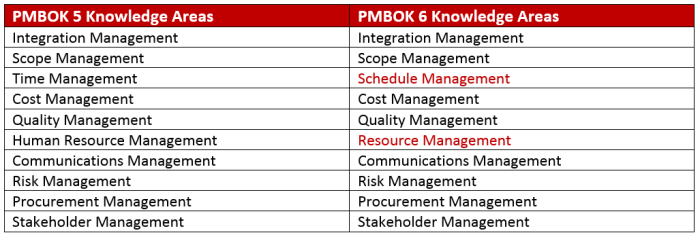The S.T.A.B.L.E. Program 6th Edition PDF free download provides a comprehensive guide to the evidence-based approach for stabilizing critically ill patients. Developed by the Resuscitation Academy, this program Artikels six core components essential for optimizing patient outcomes: sugar, thiamine, antibiotics, blood pressure, lactate, and exam.
By understanding and implementing the S.T.A.B.L.E. Program, healthcare professionals can effectively manage critical care situations, improving patient survival rates and reducing healthcare costs.
The S.T.A.B.L.E. Program has been widely adopted in clinical practice, with numerous studies demonstrating its effectiveness in improving patient outcomes. Its standardized approach ensures that critically ill patients receive timely and appropriate interventions, reducing the risk of complications and mortality.
Introduction

The S.T.A.B.L.E. program is a structured approach to the initial assessment and management of critically ill patients. It was developed by a group of critical care experts in the early 2000s and has since become a widely accepted standard of care in many hospitals around the world.
The program is based on the principle that early recognition and intervention are essential for improving outcomes in critically ill patients. It provides a framework for clinicians to quickly and efficiently assess and stabilize these patients, focusing on six key components: sugar, thiamine, antibiotics, blood pressure, lactate, and exam.
Components of the S.T.A.B.L.E. Program
- Sugar: Hypoglycemia is a common problem in critically ill patients and can lead to a variety of complications. The S.T.A.B.L.E. program recommends checking blood glucose levels in all critically ill patients and administering dextrose if the level is below 100 mg/dL.
- Thiamine: Thiamine deficiency is also common in critically ill patients and can lead to a variety of neurological problems. The S.T.A.B.L.E. program recommends administering thiamine to all critically ill patients, regardless of their nutritional status.
- Antibiotics: Antibiotics are essential for treating infections in critically ill patients. The S.T.A.B.L.E. program recommends starting antibiotics as soon as possible in patients with suspected or confirmed infection.
- Blood pressure: Hypotension is a common problem in critically ill patients and can lead to a variety of complications. The S.T.A.B.L.E. program recommends maintaining blood pressure at a level that is sufficient to perfuse the organs.
- Lactate: Lactate is a marker of tissue hypoxia. Elevated lactate levels are associated with increased mortality in critically ill patients. The S.T.A.B.L.E. program recommends measuring lactate levels in all critically ill patients and taking steps to correct the underlying cause of elevated lactate levels.
- Exam: The physical exam is an essential part of the assessment of critically ill patients. The S.T.A.B.L.E. program recommends performing a complete physical exam on all critically ill patients, paying particular attention to the respiratory, cardiovascular, and neurological systems.
Implementation of the S.T.A.B.L.E. Program: S.t.a.b.l.e. Program 6th Edition Pdf Free Download

The S.T.A.B.L.E. program is a simple and effective tool that can be used by clinicians to improve outcomes in critically ill patients. It is important to note that the program is not a substitute for clinical judgment. Clinicians should always use their own judgment when making decisions about the care of their patients.
The S.T.A.B.L.E. program can be implemented in any clinical setting where critically ill patients are cared for. It is particularly well-suited for use in emergency departments, intensive care units, and critical care transport teams.
Benefits of the S.T.A.B.L.E. Program
The S.T.A.B.L.E. program has been shown to improve outcomes in critically ill patients. A number of studies have shown that the program is associated with reduced mortality, improved organ function, and shorter hospital stays.
One of the most important benefits of the S.T.A.B.L.E. program is that it helps to identify and treat critical illness early. This can lead to a number of benefits, including:
- Improved patient outcomes
- Reduced mortality
- Shorter hospital stays
- Reduced healthcare costs
Limitations of the S.T.A.B.L.E. Program

The S.T.A.B.L.E. program is not without its limitations. One limitation is that it is not always applicable to all critically ill patients. For example, the program may not be appropriate for patients who are in cardiac arrest or who have severe burns.
Another limitation of the S.T.A.B.L.E. program is that it can be difficult to implement in some settings. For example, the program may be difficult to implement in settings where there are limited resources or where there is a high turnover of staff.
Future Directions for the S.T.A.B.L.E. Program

The S.T.A.B.L.E. program is a valuable tool for improving outcomes in critically ill patients. However, there is still room for improvement. One area for future research is to develop ways to make the program more applicable to all critically ill patients.
Another area for future research is to develop ways to make the program easier to implement in different settings. For example, researchers could develop educational materials or training programs to help clinicians learn how to use the program.
FAQ Explained
What are the core components of the S.T.A.B.L.E. Program?
The core components of the S.T.A.B.L.E. Program include sugar, thiamine, antibiotics, blood pressure, lactate, and exam.
How does the S.T.A.B.L.E. Program improve patient outcomes?
The S.T.A.B.L.E. Program improves patient outcomes by providing a standardized approach to stabilizing critically ill patients, reducing the risk of complications and mortality.
Is the S.T.A.B.L.E. Program effective in all critical care settings?
While the S.T.A.B.L.E. Program has been shown to be effective in various critical care settings, its applicability may vary depending on specific patient populations or resource availability.